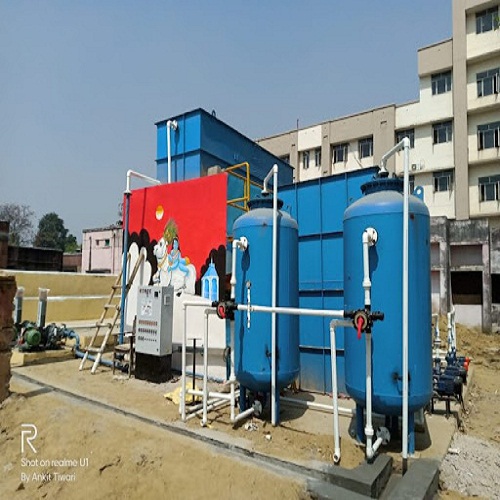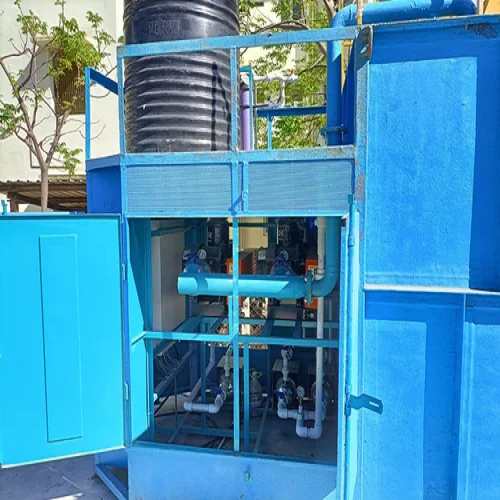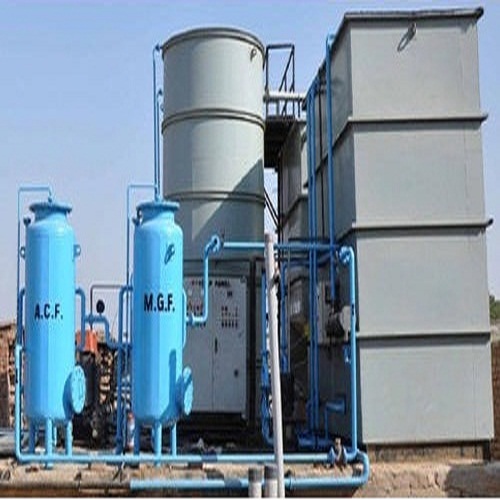
our category
SEWAGE TREATMENT PLANT (STP)
Sewage Treatment Plant (STP): Overview and Functionality
A Sewage Treatment Plant (STP) is a facility designed to treat and process sewage or wastewater from residential, industrial, and commercial sources. The primary purpose of an STP is to remove contaminants, pollutants, and harmful substances from wastewater, making it safe for discharge into the environment or for reuse. These plants play a crucial role in maintaining public health, environmental protection, and the conservation of water resources.
Sewage treatment involves several stages of physical, chemical, and biological processes aimed at removing organic matter, nutrients, solids, and pathogens. The treated water can either be safely released into rivers, lakes, or oceans or reused for non-potable purposes like irrigation or industrial processes.
Enquire Now
Importance of Sewage Treatment
-
Environmental Protection:
- Sewage can contain harmful bacteria, chemicals, and pathogens that can pollute water bodies and pose serious health risks. Proper treatment helps protect ecosystems and aquatic life by ensuring that water released into nature is safe and clean.
-
Public Health:
- Untreated or poorly treated sewage can lead to the spread of waterborne diseases, such as cholera, typhoid, and dysentery. STPs help prevent these diseases by removing harmful pathogens and pollutants.
-
Water Conservation:
- In areas facing water scarcity, treated sewage can be reused for irrigation, industrial cooling, and other non-potable uses, reducing the demand on freshwater resources.
-
Legal Compliance:
- Sewage treatment plants are required by law in many countries to meet environmental standards and regulations for wastewater discharge, ensuring that industries and municipalities adhere to pollution control measures.
Key Processes in Sewage Treatment
Sewage treatment is typically carried out in several stages, depending on the design and complexity of the plant. These stages include:
1. Preliminary Treatment
The first step in sewage treatment involves the removal of large debris and coarse particles that can damage plant equipment or clog pipes. This includes:
- Screening: Large objects such as plastics, rags, and sticks are removed using bar screens.
- Grit Removal: Heavy particles such as sand, gravel, and other inorganic materials are separated in grit chambers.
- Flow Equalization: In some plants, equalization tanks are used to regulate the flow of sewage and ensure that the treatment process is uniform.
2. Primary Treatment
During primary treatment, the main goal is to remove large suspended solids from the sewage. This is achieved by allowing the wastewater to settle in large tanks.
- Sedimentation/Settling: The sewage is held in primary settling tanks or clarifiers where solids settle to the bottom as sludge, and lighter materials like oils and grease float to the top as scum.
- Removal of Solids: The settled solids (sludge) are removed, and the scum is skimmed off.
Primary treatment removes about 50-70% of the suspended solids and approximately 25-40% of the organic matter in the sewage.
3. Secondary Treatment (Biological Treatment)
Secondary treatment is focused on removing dissolved organic matter and finer particles that remain after primary treatment. This is usually achieved through biological processes, where microorganisms break down organic pollutants.
- Activated Sludge Process: In this method, sewage is aerated in large tanks to promote the growth of bacteria and microorganisms that consume the organic matter. The mixture of wastewater and microorganisms (activated sludge) is then allowed to settle in a secondary clarifier.
- Trickling Filter System: In this process, sewage is passed over beds of microorganisms, which feed on the organic material. The filtered water is then collected at the bottom of the bed.
Secondary treatment can remove up to 90% of the organic pollutants and suspended solids in the wastewater.
4. Tertiary Treatment (Advanced Treatment)
Tertiary treatment is an additional step used to further purify the water by removing any remaining pollutants, nutrients (like nitrogen and phosphorus), and pathogens. This treatment is especially important when the treated water is being released into sensitive ecosystems or used for reuse purposes.
- Filtration: Fine filters or membranes are used to remove any remaining solids or particles.
- Disinfection: Disinfection methods such as chlorine, ultraviolet (UV) light, or ozone are used to kill any remaining bacteria, viruses, and pathogens.
- Nutrient Removal: Special processes, such as biological nutrient removal (BNR), chemical precipitation, or ion exchange, are employed to remove nitrogen and phosphorus, which can cause eutrophication in water bodies.
- Reverse Osmosis: In some cases, reverse osmosis is used to remove dissolved salts and other small contaminants, especially when the water is intended for reuse or potable use.
Tertiary treatment ensures that the water is of high quality and meets stringent environmental and health standards.
Sludge Treatment and Disposal
Sewage treatment plants generate sludge as a byproduct, which needs to be treated and disposed of or reused. The sludge treatment process typically involves:
- Thickening: Reducing the volume of the sludge by removing excess water.
- Digestion: The sludge is further treated in digesters where bacteria break down the organic matter, reducing its volume and producing biogas (methane).
- Dewatering: The sludge is dewatered to remove water content, often using centrifuges or filter presses.
- Disposal or Reuse: The final treated sludge can be safely disposed of in landfills, used as fertilizer or soil conditioner in agriculture, or incinerated to generate energy.
Water Reuse and Recycling
In many parts of the world, treated sewage is increasingly being reused for non-potable applications such as:
- Irrigation: Reclaimed water is used for agricultural irrigation, reducing the need for fresh water.
- Industrial Use: Treated sewage can be used in industrial processes such as cooling, cleaning, and manufacturing.
- Toilet Flushing: In commercial buildings or public places, treated wastewater can be used for flushing toilets, reducing potable water consumption.
In some advanced sewage treatment plants, tertiary-treated water can even be used for potable purposes through additional treatment methods like reverse osmosis, known as direct potable reuse (DPR) or indirect potable reuse (IPR).
Benefits of Sewage Treatment Plants
-
Public Health Protection:
- STPs help prevent the spread of waterborne diseases by removing pathogens and harmful microorganisms from sewage. This reduces the risk of illness in communities.
-
Environmental Protection:
- Proper treatment of sewage prevents the contamination of rivers, lakes, and oceans, protecting aquatic ecosystems and maintaining biodiversity.
-
Water Conservation:
- Reusing treated sewage water helps conserve freshwater resources, especially in areas with water scarcity. This can support agricultural, industrial, and domestic needs.
-
Regulatory Compliance:
- Sewage treatment plants help municipalities and industries comply with environmental regulations and discharge standards set by authorities.
-
Resource Recovery:
- Modern STPs focus on resource recovery, including the generation of biogas (methane) for energy, recovery of nutrients for agricultural use, and water reuse for non-potable applications.
-
Reduced Pollution:
- By removing organic and inorganic pollutants, STPs reduce the overall pollution load on the environment, preventing harmful substances from entering natural water bodies.
Challenges in Sewage Treatment
-
High Capital and Operational Costs:
- Establishing and maintaining a sewage treatment plant requires significant investment in infrastructure, technology, and labor. This can be challenging for municipalities or regions with limited resources.
-
Energy Consumption:
- Sewage treatment processes, particularly secondary and tertiary treatments, can be energy-intensive. Many plants are working to improve energy efficiency and incorporate renewable energy sources, such as biogas produced from sludge digestion.
-
Sludge Management:
- The large volumes of sludge produced during treatment require careful management. Sludge treatment, dewatering, and disposal can be costly and require ongoing attention.
-
Pollutant Complexity:
- The increasing presence of pharmaceuticals, microplastics, and other hard-to-remove pollutants in sewage poses a challenge to traditional treatment methods. Advanced treatment technologies are needed to address these new types of contaminants.
Future Trends in Sewage Treatment
-
Decentralized Systems:
- Small-scale, decentralized sewage treatment plants are being developed for remote or rural areas, providing a more sustainable and cost-effective solution for treating wastewater locally.
-
Resource Recovery:
- Modern sewage treatment plants are focusing on recovering resources such as energy (biogas), nutrients (nitrogen, phosphorus), and water for reuse, helping reduce operational costs and environmental impact.
-
Smart STPs:
- Integration of smart technologies like IoT sensors, data analytics, and automation is optimizing the performance of sewage treatment plants. These technologies help monitor and control various parameters, leading to better management and energy efficiency.
-
Advanced Treatment Technologies:
- New technologies such as membrane bioreactors, advanced oxidation processes, and reverse osmosis are being used to treat sewage more effectively, including the removal of new types of pollutants like pharmaceuticals and microplastics.
Conclusion
A Sewage Treatment Plant (STP) is an essential infrastructure for managing wastewater, ensuring public health, and protecting the environment. Through a combination of physical, chemical, and biological processes, STPs purify sewage, making it safe for discharge or reuse. These plants contribute to water conservation, pollution control, and the recovery of valuable resources like water and energy. As urbanization increases and environmental concerns grow, the importance of efficient and sustainable sewage treatment will continue to rise, driving the development of advanced technologies and innovative solutions for wastewater management.



